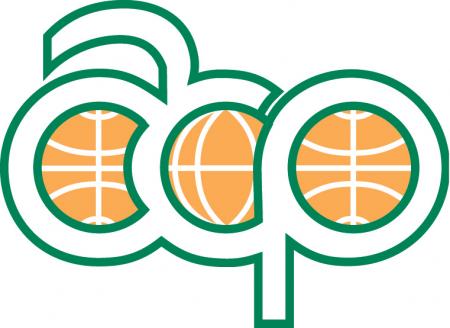AquaMaps are computer-generated predictions of natural occurrence of marine species, based on the environmental tolerance of a given species with respect to depth, salinity, temperature, primary productivity, and its association with sea ice or coastal areas. These 'environmental envelopes' are matched against an authority file which contains respective information for the Oceans of the World. Independent knowledge such as distribution by FAO areas or bounding boxes are used to avoid mapping species in areas that contain suitable habitat, but are not occupied by the species. Maps show the color-coded likelihood of a species to occur in a half-degree cell, with about 50 km side length near the equator. Experts are able to review, modify and approve maps.
Environmental envelopes are created in part (FAO areas, bounding boxes, depth ranges) from respective information in species databases such as FishBase and in part from occurrence records available from OBIS or GBIF. AquaMaps predictions have been validated successfully for a number of species using independent data sets and the model was shown to perform equally well or better than other standard species distribution models, when faced with the currently existing suboptimal input data sets (Ready et al. 2010).
The creation of AquaMaps is supported by the following projects: MARA, Pew Fellows Program in Marine Conservation, INCOFISH, Sea Around Us, and Biogeoinformatics of Hexacorals.
Kaschner, K., D.P. Tittensor, J. Ready, T Gerrodette and B. Worm (2011). Current and Future Patterns of Global Marine Mammal Biodiversity. PLoS ONE 6(5): e19653. PDF
Ready, J., K. Kaschner, A.B. South, P.D Eastwood, T. Rees, J. Rius, E. Agbayani, S. Kullander and R. Froese (2010). Predicting the distributions of marine organisms at the global scale. Ecological Modelling 221(3): 467-478. PDF
Copyright
Creative Commons License This work is licensed under a Creative Commons Attribution-NonCommercial 3.0 Unported License. (CC-BY-NC)
You are welcome to include maps from www.aquamaps.org in your own web sites for non-commercial use, given that such inserts are clearly identified as coming from AquaMaps, with a backward link to the respective source page.
Contacts
Rainer Froese, GEOMAR, Coordinator [email protected]
Kristin Kaschner, Uni Freiburg, model development [email protected]
Ma. Lourdes D. Palomares, UBC, extension to non-fish marine organisms [email protected]
Sven Kullander, NRM, extension to freshwater [email protected]
Jonathan Ready, NRM, implementation [email protected]
Tony Rees, formerly with CSIRO, mapping tools [email protected]
Paul Eastwood, SOPAC, validation [email protected]
Andy South, CEFAS, validation [email protected]
Josephine Rius-Barile, Q-quatics, database programming / data collection [email protected]
Cristina Garilao, GEOMAR, web programming [email protected]
Kathleen Kesner-Reyes, Q-quatics, map validation [email protected]
Elizabeth Bato, Q-quatics, map validation (non-fish) [email protected]
Citing AquaMaps
General citation
Kaschner, K., K. Kesner-Reyes, C. Garilao, J. Rius-Barile, T. Rees, and R. Froese. 2019. AquaMaps: Predicted range maps for aquatic species. World wide web electronic publication, www.aquamaps.org, version 10/2019.
Cite individual maps as, e.g.,
Computer Generated Map for Gadus morhua (Atlantic cod). www.aquamaps.org, version 10/2019 (accessed 01 Oct 2019).
Reviewed Native Distribution Map for Gadus morhua (Atlantic cod). www.aquamaps.org, version 10/2019 (accessed 01 Oct 2019).
Cite biodiversity maps as, e.g.,
Shark and Ray Biodiversity Map. www.aquamaps.org, version 10/2019 (accessed 01 Oct 2019).
Cite the environmental dataset as, e.g.,
Kesner-Reyes, K., Segschneider, J., Garilao, C., Schneider, B., Rius-Barile, J., Kaschner, K., and Froese, R.(editors). AquaMaps Environmental Dataset: Half-Degree Cells Authority File (HCAF). World Wide Web electronic publication, www.aquamaps.org/main/envt_main.php, ver. 7, 10/2019.
Using Full or Large Sets of AquaMaps Data
We encourage partnering with the AquaMaps team for larger research projects or publications that would make intensive use of AquaMaps to ensure that you have access to the latest version and/or reviewed maps, the limitations of the data set are clearly understood and addressed, and that critical maps and/or unlikely results are recognized as such and double-checked for correctness prior to drawing conclusions and/or subsequent publication.
The AquaMaps team can be contacted through Rainer Froese ([email protected]) or Kristin Kaschner ([email protected]).
Privacy Policy
AquaMaps uses log data generate usage statistics. Like most websites, AquMaps gathers information about internet protocol (IP) addresses, browser, referring pages, operating system, date/time, clicks, and visited pages, and store it in log files. This information is used to find errors in our website, analyze trends, and determine country of origin of our users. The log files are stored indefinitely. Only the administrators of the AquaMaps server has direct access to the log files. The information is used to inform further development of AquaMaps. Usage statistics may be shared with third parties for non-commercial purposes.
Disclaimer
AquaMaps generates standardized computer-generated and fairly reliable large scale predictions of marine and freshwater species. Although the AquaMaps team and their collaborators have obtained data from sources believed to be reliable and have made every reasonable effort to ensure its accuracy, many maps have not yet been verified by experts and we strongly suggest you verify species occurrences with independent sources before usage. We will not be held responsible for any consequence from the use or misuse of these data and/or maps by any organization or individual.
Copyright
This work is licensed under a Creative Commons Attribution-NonCommercial 3.0 Unported License (CC-BY-NC). You are welcome to include text, numbers and maps from AquaMaps in your own web sites for non-commercial use, given that such inserts are clearly identified as coming from AquaMaps, with a backward link to the respective source page. Note that although species photos and drawings draw mainly from FishBase and SeaLifeBase, they belong to the indicated persons or organizations and have their own copyright statements.














